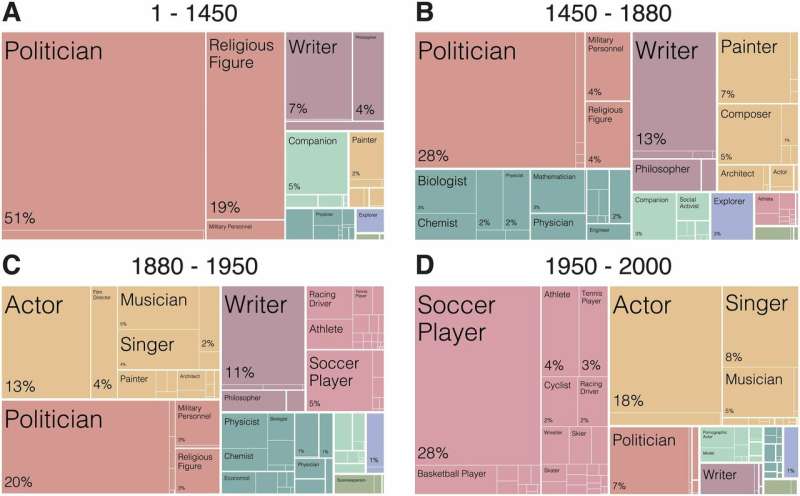The medium shapes the message: New communication technologies may bias historical record

The introduction of communication technologies appears to bias historical records in the direction of the content best suited for each technology, according to a study published February 20, 2019 in the open-access journal PLOS ONE by C. Jara-Figueroa and colleagues from the Massachusetts Institute of Technology.
Studying the societal impact of new communication technologies is challenging, due to limited data on historical events as well as the difficulty of parsing observed correlations. The authors of this study used a dataset of almost 14,000 biographies, classified by primary occupation on Wikipedia or Wikidata. They analyzed the impact of the printing press, radio, and television, on the biographical content that was recorded following their introduction.
They found that the introduction of printing (1450-1880) was associated with an increase in the number of painters, composers, and scientists recorded in Wikipedia's biographical records, as well as a decrease in religious figures. Cities thought to be early adopters of printing were more likely to be the birthplace of recorded scientists and artists than cities which adopted printing later. The introduction of radio (1880-1950) was associated with a significant shift towards the performing arts in Wikipedia's biographical records. Finally, with the introduction of television (1950-2000), the authors found an increase in recorded sports players and a further increase in the number of performing artists. The authors believe their results may indicate that historical figures whose work was best suited to available media—for example, musicians for radio, and sportspeople for television, were most likely to be recorded in historical records.
The authors emphasize that their data relies largely on Wikipedia, a community-edited resource, and also note that the memorability and fame of recent individuals is prone to change over time. However, they note this indication that prevalent communication technologies rapidly affect the biographies present in our modern digital historical records warrants further investigation—and may contain clues to the "heroes" we will produce for future historical records.
The authors add: "McLuhan was right! A team of MIT researchers used big data to study the effect of communication technologies on collective memory. They found that new communication technologies change the occupations of people who achieved global fame."
More information: Jara-Figueroa C, Yu AZ, Hidalgo CA (2019) How the medium shapes the message: Printing and the rise of the arts and sciences. PLoS ONE 14(2): e0205771. doi.org/10.1371/journal.pone.0205771
Journal information: PLoS ONE
Provided by Public Library of Science



















